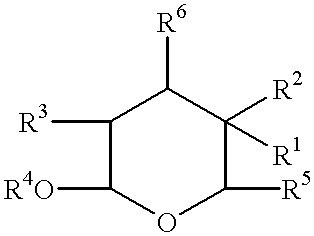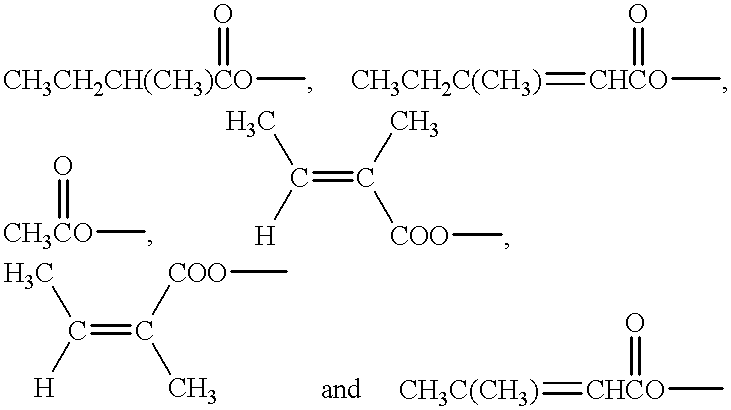Use of calendula glycosides for the treatment of psoriasis
a technology of calendula and glycosides, which is applied in the direction of biocide, drug composition, antibiotics, etc., can solve the problems of discontinuation of treatment, separation of herbs extraction, and lack of curative effect of psoriasis
- Summary
- Abstract
- Description
- Claims
- Application Information
AI Technical Summary
Benefits of technology
Problems solved by technology
Method used
Image
Examples
example 2
Isolation of Van-9-2
The procedure of example 1 (above) was followed up to and including the VLC and TLC analysis.
Van-5-10 was subjected to preparative TLC (silica gel; solvent; hexane; chloroform; ethyl acetate, 3:6:6) to give five fractions, Van-9-1 to Van-9-5, of which Van-9-2 was found to be biologically active using the 3T3 cell bioassay (example 5).
example 3
Isolation of Van-10-2, Van-10-3 and Van-10-4
The protocols of examples 1 and 2 above were followed to reach Van-9-2.
Van-9-02 was separated into Van-9-2B and Van-9-2C by preparative TLC (solvent: hexane: chloroform: ethyl acetate, 3:6:4).
Van-9-2B and Van-9-2C were separated by HPLC on an ODS analytical column using 75% acetonitrile in water (plus 0.1% trifluoroacetic acid). This gave four fractions, Van-10-1, Van-10-2, Van-10-3, and Van-10-4. NMR data for Van-10-2, Van-10-3 and Van-10-4 is provided hereinbelow.
It is believed that the stereochemistry of Van compounds at the aromadendranol moiety is the following structure: ##STR28##
However, the skilled addressee would also appreciate that further stereoisomeric variants of the aromadendranol moiety having the following structures are also encompassed by the present invention: ##STR29##
.sup.1 H .sup.13 C
.sup.1 H .sup.13 C
example 4
Isolation of Van-15A
Reference is made to FIG. 1. The protocols of examples 1 and 2 were followed to get to Van-6-1.
Van-6-1 was fractionated by column chromatography (Sephadex LH20: solvent:chloroform:methanol, 1:1) into two fractions: Van-15-1 (heavier fraction containing fatty acids) and Van-15-2 (lighter fraction containing terpenes).
Van-15-2, was subjected to preparative TLC (silica gel; solvent:chloroform:methanol 95:5) to give Van-15A and a minor component Van-15B. NMR data for the active component, Van-15A is provided hereinbelow.
PUM
| Property | Measurement | Unit |
|---|---|---|
| diameter | aaaaa | aaaaa |
| diameter | aaaaa | aaaaa |
| volume | aaaaa | aaaaa |
Abstract
Description
Claims
Application Information
 Login to View More
Login to View More - R&D
- Intellectual Property
- Life Sciences
- Materials
- Tech Scout
- Unparalleled Data Quality
- Higher Quality Content
- 60% Fewer Hallucinations
Browse by: Latest US Patents, China's latest patents, Technical Efficacy Thesaurus, Application Domain, Technology Topic, Popular Technical Reports.
© 2025 PatSnap. All rights reserved.Legal|Privacy policy|Modern Slavery Act Transparency Statement|Sitemap|About US| Contact US: help@patsnap.com



